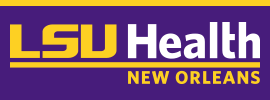Location
LSUHSC - New Orleans
Event Website
https://publichealth.lsuhsc.edu/honorsday/2024/default.aspx
Start Date
2-4-2024 9:00 AM
Description
Background: PrEP (Pre-exposure Prophylaxis) is a medication for HIV-negative people who want to maintain their negative status. To address disparities in PrEP use, the Louisiana Office of Public Health, STD/HIV/Hepatitis Program (SHHP) piloted the launch of the TelePrEP Program in 2018, which allows people to connect virtually with a qualified, clinical PrEP provider without going to a clinic/doctor’s office.
Objectives: An evaluation of SHHP’s TelePrEP program has not yet been conducted to examine it’s full reach to priority populations. Therefore, the objective of this study was to determine what characteristics are predictors of PrEP persistence, defined as the time to first PrEP discontinuation.
Methods: A retrospective review of all records for the program was conducted, and the total number of eligible clients between 2018 and 2023 was 219. Persistence was estimated by Kaplan-Meier and Cox proportional hazards modeling. A sensitivity analysis was conducted to determine if changing the cut point of the outcome impacted the results.
Results: Of the 219 individuals, 34.7% were black, 81.3% were male, and 35.6% preferred to be contacted by email. The median time to first PrEP discontinuation was 1,310 days. In multivariate analysis, email (aHR=5.68, 95% CI 2.75-11.76), black (aHR=2.10, 95% CI 1.04-4.07), and multiracial/other (aHR=6.47, 95% CI 2.84-14.78) significantly influenced dropout rates in both models analyzed (90 days and 180 days). Sexual orientation, age, gender, and insurance were not significant.
Conclusions: Overall, contact method and race were significant predictors of PrEP persistence. However, insurance was not a significant predictor of staying on PrEP suggesting that eligibility criteria solely based on insurance status may not be appropriate.
Recommendations: Clients who were black or multiracial/other had a consistently higher dropout rate compared to white clients highlighting potential disparities in engagement with the TelePrEP program. The TelePrEP program should also explore more contact methods that lead to more improved engagement.
Recommended Citation
Northup, Sarah; Wendell, Debbie; Hsieh, Mei-Chin; Albright, Madison; Nakouzi, Thalia; Mandani, Jan; and De la Rosa, Emma, "Analyzying Pre-exposure Prophylaxis (PrEP) Persistence: Insights to Louisiana TelePrEP Program" (2024). School of Public Health Delta Omega Honors Day Poster Sessions. 8.
https://digitalscholar.lsuhsc.edu/dohd/2024/2024/8
Analyzying Pre-exposure Prophylaxis (PrEP) Persistence: Insights to Louisiana TelePrEP Program
LSUHSC - New Orleans
Background: PrEP (Pre-exposure Prophylaxis) is a medication for HIV-negative people who want to maintain their negative status. To address disparities in PrEP use, the Louisiana Office of Public Health, STD/HIV/Hepatitis Program (SHHP) piloted the launch of the TelePrEP Program in 2018, which allows people to connect virtually with a qualified, clinical PrEP provider without going to a clinic/doctor’s office.
Objectives: An evaluation of SHHP’s TelePrEP program has not yet been conducted to examine it’s full reach to priority populations. Therefore, the objective of this study was to determine what characteristics are predictors of PrEP persistence, defined as the time to first PrEP discontinuation.
Methods: A retrospective review of all records for the program was conducted, and the total number of eligible clients between 2018 and 2023 was 219. Persistence was estimated by Kaplan-Meier and Cox proportional hazards modeling. A sensitivity analysis was conducted to determine if changing the cut point of the outcome impacted the results.
Results: Of the 219 individuals, 34.7% were black, 81.3% were male, and 35.6% preferred to be contacted by email. The median time to first PrEP discontinuation was 1,310 days. In multivariate analysis, email (aHR=5.68, 95% CI 2.75-11.76), black (aHR=2.10, 95% CI 1.04-4.07), and multiracial/other (aHR=6.47, 95% CI 2.84-14.78) significantly influenced dropout rates in both models analyzed (90 days and 180 days). Sexual orientation, age, gender, and insurance were not significant.
Conclusions: Overall, contact method and race were significant predictors of PrEP persistence. However, insurance was not a significant predictor of staying on PrEP suggesting that eligibility criteria solely based on insurance status may not be appropriate.
Recommendations: Clients who were black or multiracial/other had a consistently higher dropout rate compared to white clients highlighting potential disparities in engagement with the TelePrEP program. The TelePrEP program should also explore more contact methods that lead to more improved engagement.
https://digitalscholar.lsuhsc.edu/dohd/2024/2024/8

